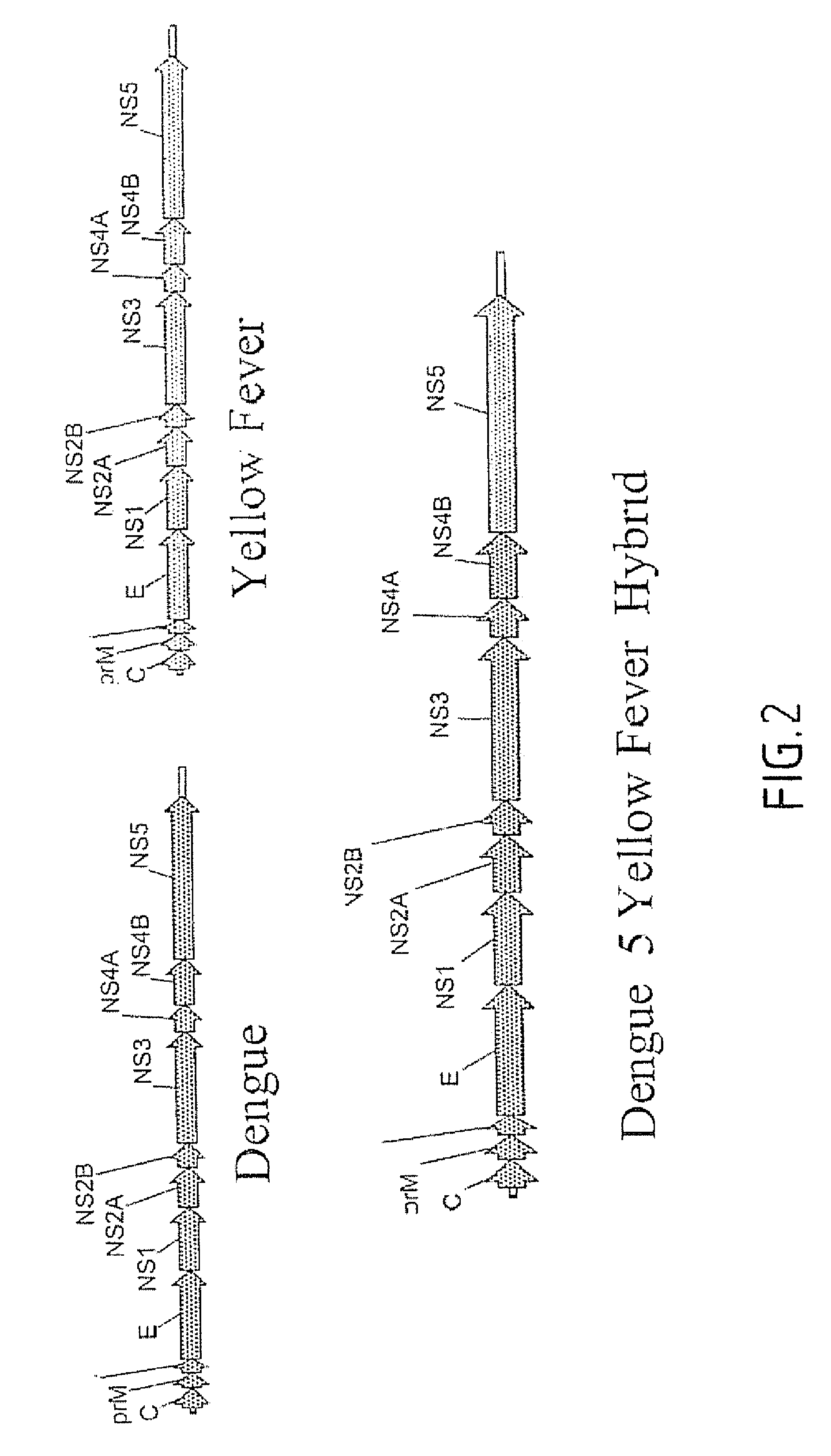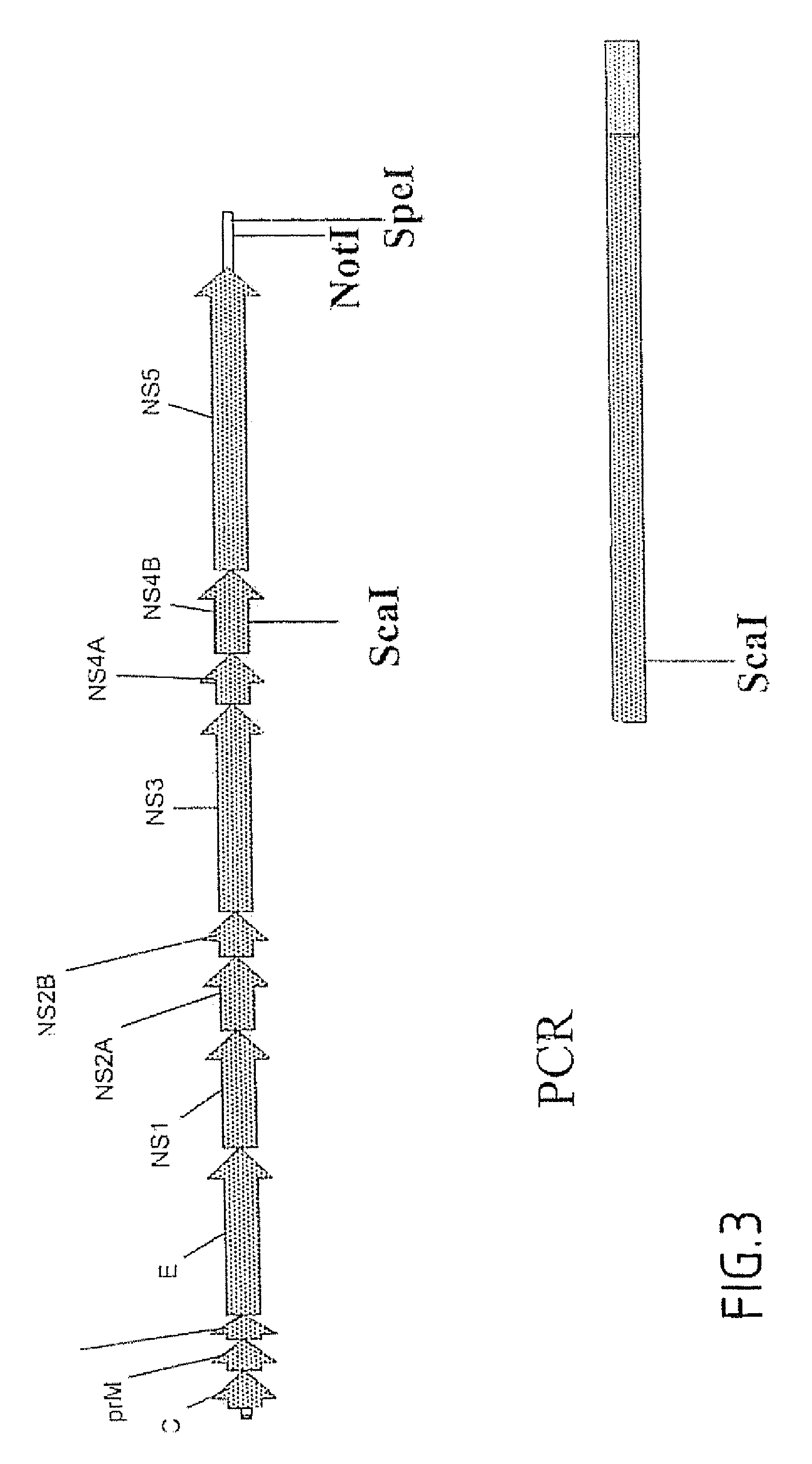Dengue chimeric viruses
a technology of dengue virus and chimeric virus, applied in the field of dengue chimeric virus, can solve the problems of difficult enforcement and high cost, lav strains correspond to heterogeneous populations and represent a risk, dengue viruses are prone to generate mutations and genetic variations, and achieve the effect of higher genetic stability
- Summary
- Abstract
- Description
- Claims
- Application Information
AI Technical Summary
Benefits of technology
Problems solved by technology
Method used
Image
Examples
example 1
Construction of a Chimeric Dengue 3 Virus Containing the Yellow Fever NS5 Sequence
[0064]To construct a chimeric dengue 3 virus of the invention, The complete Dengue 3 genomic cDNA (SEQ ID No.11) can be cloned into a vector pVAX (Invitrogen) containing the T7 RNA polymerase promoter and engineered such that the unique NotI restriction site is flanking the 3′ end of the viral sequence.
[0065]To link Dengue 3 NS4b and Yellow Fever NS5 one can use the following strategy based on the technique of overlap extension. This technique is advantageously selected for it's capacity to perfectly fuse two genetic sequence avoiding the need to create new restriction sites at the point of junction.
[0066]The Dengue-Yellow Fever chimeric construct can be generated using three consecutive PCR steps, as shown on the diagrammatic representation on FIG. 1 and as described below.
[0067]In the first PCR step, two partially overlapping DNA fragments (PCR1 and PCR2) are generated as follows:
[0068]The PCR1 fragm...
example 2
Recovery of Chimeric Dengue Viruses
[0083]To recover the chimeric dengue viruses, the following strategy can be used.
[0084]All recombinant plasmids can be amplified in Escherichia coli XL1-Blue cells. 500 ng of plasmid are then linearized by the NotI restriction endonuclease. Viral RNA can be obtained after in vitro transcription using T7 RNA polymerase and capped with the cap analog m7 GpppA. And, then transfected into 3×106 to 4×106 LLC-MK2 or BHK-21 cells by electroporation. Transfected cells are transferred to 75-cm2 flasks in DMEM containing 10% FBS. The resulting chimeric virus is then amplified and isolated from the cells.
PUM
| Property | Measurement | Unit |
|---|---|---|
| volume | aaaaa | aaaaa |
| volume | aaaaa | aaaaa |
| time | aaaaa | aaaaa |
Abstract
Description
Claims
Application Information
 Login to View More
Login to View More - R&D
- Intellectual Property
- Life Sciences
- Materials
- Tech Scout
- Unparalleled Data Quality
- Higher Quality Content
- 60% Fewer Hallucinations
Browse by: Latest US Patents, China's latest patents, Technical Efficacy Thesaurus, Application Domain, Technology Topic, Popular Technical Reports.
© 2025 PatSnap. All rights reserved.Legal|Privacy policy|Modern Slavery Act Transparency Statement|Sitemap|About US| Contact US: help@patsnap.com



